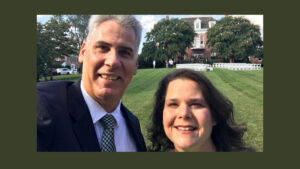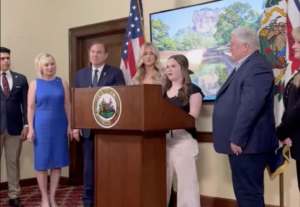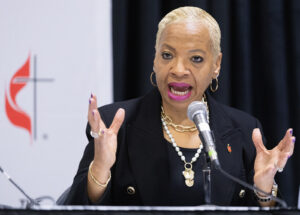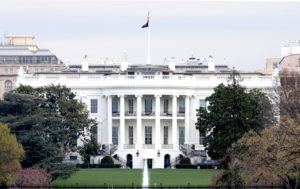
ALBANY, N.Y. (BP)–Same-sex couples in two of the nation’s most populous states — New York and California — will be celebrating what likely would be thousands of “weddings” this summer if a directive by the New York governor stands and a much-criticized ruling by the California Supreme Court goes into effect.
New York Gov. David A. Paterson, a Democrat, has ordered state agencies to revise their policies and begin recognizing “gay marriages” from other jurisdictions, such as California, Massachusetts and Canada. The Alliance Defense Fund, a pro-family legal firm, is expected to file a lawsuit next week against the governor, arguing his action is unconstitutional.
Nevertheless, if his order — coupled with the California decision — stands, then “gay marriages” in the nation’s first and third (New York) most populous states would be the focus of nationwide attention this summer, months before a presidential election.
Janet McKee, chief of California’s office of vital records, sent out an order May 28 saying that same-sex couples in that state could begin “marrying” June 17 — that is, unless the California Supreme Court delays its ruling from going into effect until after the November election, when citizens there likely will consider a constitutional marriage amendment. McKee’s order also gave the OK to begin using new forms that change “Bride” and “Groom” to instead say “Party A” and “Party B”
The Associated Press reported Friday that the attorneys general of 10 states have joined other parties in asking the California Supreme Court to stay the decision until after the election. The states say they have an interest in the case because they would have to determine if their respective state recognized the marriage licenses. The states are Alaska, Colorado, Florida, Idaho, Michigan, Nebraska, New Hampshire, South Carolina, South Dakota and Utah.
Mathew D. Staver, an attorney with the pro-family group Liberty Counsel, predicted that it would be a big victory for same-sex couples if everything stands as-is.
“The problem … [is that] California doesn’t have a residency requirement,” Staver said during a panel discussion May 29 at the National Press Club in Washington hosted by the Family Research Council. “So once this becomes effective — if there’s no stay in California — that means that someone in New York can fly over to California, get a same-sex marriage license and then fly back to New York, and now [the license] all of a sudden is recognized.”
Critics of Paterson’s directive point out that in 2006 New York’s highest court refused to legalize “gay marriage,” and that last year a “gay marriage” bill failed to make it through the state legislature. Paterson’s action could “open up a floodgate to do indirectly what the court of New York says is not permitted,” Staver said.
Glen Lavy of the Alliance Defense Fund called Paterson’s directive “outrageous” and said the governor is “trying to circumvent the … the democratic process.” Tony Perkins, president of the Family Research Council, agreed. Both men made their comments at the National Press Club.
“Clearly the people of New York, through their elected representatives, do not support same-sex marriage,” Perkins said. “The courts have not supported same-sex marriage. But you have the new governor using a bypass of the process to recognize these same-sex marriages.”
Paterson defended his directive by pointing to a state appeals court ruling that said the state must recognize out-of-state marriages. The problem with Paterson’s logic, conservative attorneys said, is that the state’s highest court has yet to rule on the issue, and that other lawsuits on the matter are still working their way through the court system.
State Sen. Joseph L. Bruno, the majority leader of the New York Senate, hinted that he is considering legal action himself.
“There’s a constitutional question here,” he said at a press conference, according to The New York Times.
Meanwhile, a new poll in California shows that citizens there oppose a proposed constitutional marriage amendment — a polling result in direct conflict with an earlier poll.
The Field Poll asked the amendment question two different ways to two different groups but got similar results, both showing opposition to the proposal. It was conducted May 17-26 among 1,052 registered voters. By a 54-40 percent margin, voters were opposed to the amendment when asked, “Do you favor or oppose changing the California State Constitution to define marriage as between a man and a woman, thus barring marriage between gay and lesbian couples?” By a 51-43 percent margin, voters were opposed to it when asked this way, “There may be a vote on this issue in the November election. Would you favor or oppose having the state constitution prohibit same-sex marriage, by defining marriage as only between a man and a woman?”
But a Los Angeles Times/KTLA poll had the opposite result, with 54 percent supporting the amendment and 35 percent opposing it. It was conducted May 20-21 among 705 registered voters and asked, “A proposed amendment to the state’s Constitution that may appear on the November ballot would reverse the court’s decision and state that marriage is only between a man and a woman. If the election were held today, would you vote for or against the amendment?”
Additionally, the Field Poll showed that voters were favoring the court’s opinion by a 48-46 percent margin. That question asked, “Do you approve or disapprove of the recent California State Supreme Court ruling declaring the state’s ban on same-sex marriage as being unconstitutional, thus allowing same-sex couples to marry?”
Again, the LA Times poll showed the opposite result, with 52 percent opposing the decision and 41 percent supporting it. That question asked, “Do you approve or disapprove of the California Supreme Court’s decision last week to allow same-sex marriage in California?”
The Family Research Council’s Perkins said that — despite conflicting polling data — he is confident that a majority of Californians support the marriage amendment.
“Marriage amendments … historically underpoll,” he said. “On average, they underpoll 6 to 8 percent.”
Amendments underpoll, Perkins said, because people are afraid to state their true opinions about “gay marriage” out of fear they’ll be viewed as or called bigoted or homophobic.
“But when they go into the secrecy of the voting booth … Americans have overwhelmingly … supported traditional marriage between a man and a woman,” he said.
One example of underpolling took place in California in 2000 when the Field Poll examined voters’ opinions on Proposition 22 — the same law that was struck down stating that marriage is between a man and a woman. The final Field Poll had it passing with 53 percent of the vote; on Election Day, though, it passed with 61 percent of the vote.
There are other examples of underpolling. A Wisconsin amendment in 2006 polled anywhere from 48 to 51 percent in pre-election polls but passed 59-41 percent, and an Oregon amendment in 2004 polled around 50 percent but passed 56-44 percent.
–30–
Michael Foust is an assistant editor of Baptist Press.















